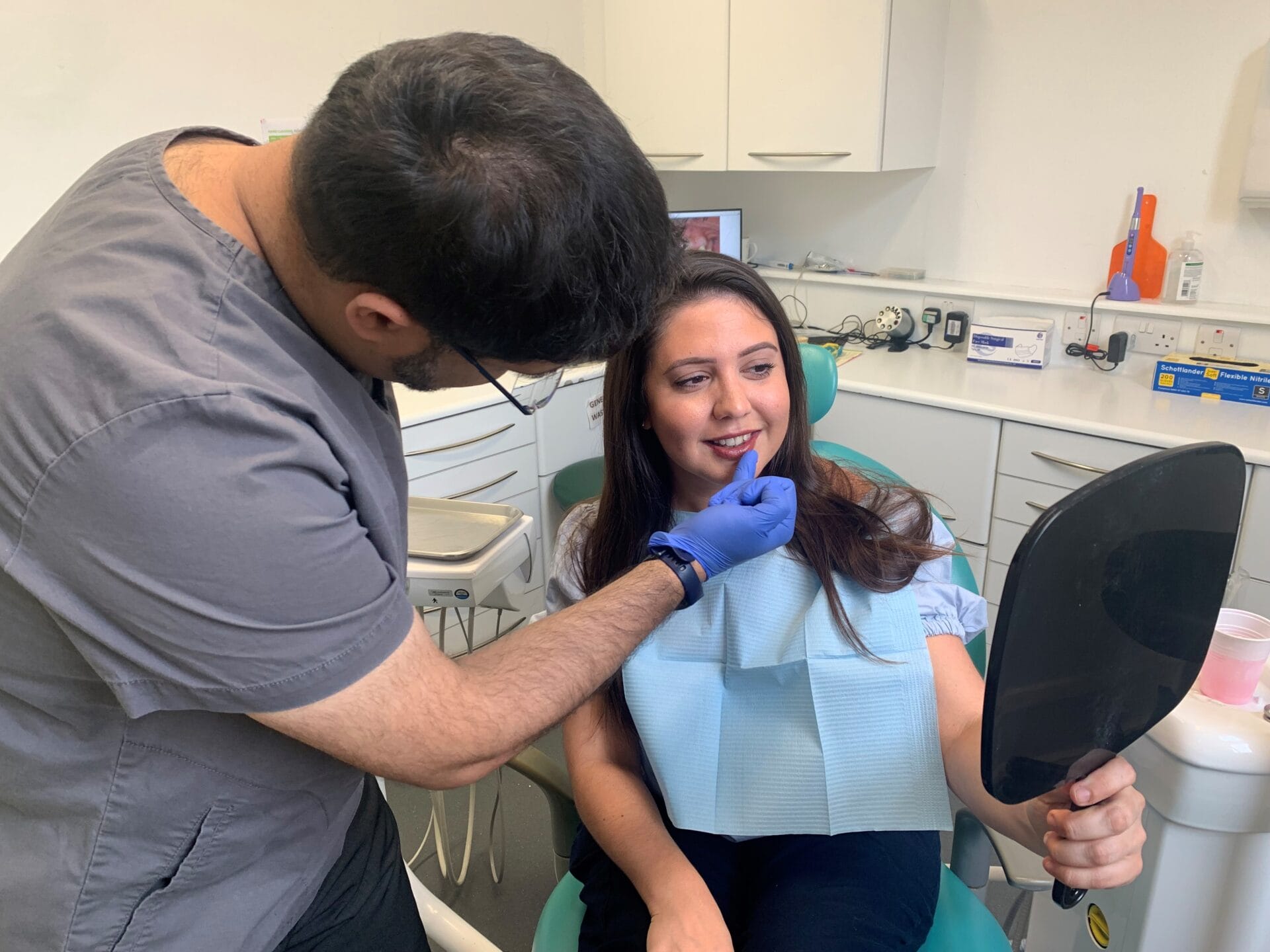Experience the most up to date Innovations in Dental Implants Innovation
As the area of dental care remains to evolve, the developments in dental implant modern technology have actually been absolutely nothing brief of amazing. From using innovative products that improve longevity to the execution of electronic imaging for specific positioning, these advancements are changing the landscape of dental care. With minimally intrusive medical methods and the modification capacities of 3D printing, individuals now have access to tailored remedies that were once unimaginable. Additionally, the combination of innovation is changing the capability of oral implants, assuring boosted end results and person complete satisfaction.
Advanced Materials for Boosted Sturdiness
In the realm of dental implants modern technology, the combination of innovative materials has actually significantly added to improving toughness and longevity of these vital oral prosthetics. The usage of products such as titanium alloys, zirconia, and ceramic substances has changed the field by using increased resistance, biocompatibility, and strength to rust.
Titanium alloys are widely utilized in dental implants because of their outstanding strength-to-weight ratio, deterioration resistance, and compatibility with the body. These alloys guarantee the stability and durability of the dental implant by withstanding the pressures applied during eating and talking, providing a trusted option for people seeking sturdy tooth substitutes.
Zirconia, a type of ceramic product, has gained appeal for its biocompatibility and natural tooth-like appearance. Its high toughness and resistance to wear make it a suitable choice for dental crowns and bridges, improving the general aesthetic appeals and capability of the dental implant.

Digital Imaging for Specific Positioning
The advancement of oral implants modern technology has actually better progressed with the assimilation of electronic imaging strategies, making certain specific placement of these prosthetics for optimal practical and aesthetic outcomes. Digital imaging plays a crucial role in the preparation and placement of dental implants by providing in-depth 3D pictures of the patient's jawbone framework. This modern technology enables dental professionals to assess bone thickness, find vital frameworks, and prepare the specific setting and angle for implant positioning with unequaled precision.
By using electronic imaging, dental experts can produce digital surgical overviews that work as a roadmap throughout the implant positioning procedure. These overviews are personalized for each person, thinking about their one-of-a-kind composition and the desired result. This degree of precision not just enhances the success price of oral implant procedures yet also lowers the danger of difficulties.
Additionally, electronic imaging enables dental practitioners to imagine the last prosthetic reconstruction before the real positioning of implants, permitting careful preparation and making sure that the end result meets the individual's visual expectations. Generally, the assimilation of digital imaging technology has actually changed the field of dental implants, offering individuals an extra foreseeable, efficient, and patient-specific treatment technique.

Minimally Invasive Surgical Strategies


Improvements in surgical approaches have actually brought about the growth of minimally invasive techniques in the area of dental implantology. These techniques intend to reduce injury to the person, reduce healing times, and improve total therapy results. Minimally intrusive medical procedures involve smaller sized cuts, specialized instruments, and progressed imaging innovations to exactly place oral implants with minimal disruption to bordering tissues.
One trick element of minimally invasive methods is making use of assisted surgical treatment, where 3D imaging and computer-aided design software program are utilized to plan the dental implant placement with great precision. This permits an extra predictable end result and can typically remove the requirement for comprehensive flap surgical procedure.
Furthermore, advancements in materials and dental implant design have actually also added to the success of minimally intrusive techniques. Implants with improved surface homes advertise faster osseointegration, minimizing the healing time needed prior to the prosthetic restoration can be put.
3D Printing for Custom-made Solutions
Utilizing 3D printing innovation in dental implantology enables the production of very customized options customized to individual client demands and physiological variations. This sophisticated modern technology enables dental experts to make and fabricate dental implants with phenomenal precision and accuracy. By using digital imaging strategies, such as check that cone light beam computed tomography (CBCT), detailed 3D designs of the person's dental cavity can be generated to direct the implant preparing procedure.
Among the vital benefits of 3D printing in oral implantology is the capacity to produce patient-specific implants that flawlessly fit the special makeup of each person. This personalized approach helps improve the overall success and longevity of the implant by ensuring optimal fit and alignment. In addition, 3D printing permits the manufacturing of intricate geometries and detailed frameworks that would be impossible or tough to attain making use of typical production techniques.
In addition, 3D printing innovation enables dental experts to improve the implantation process, reducing surgery time and boosting total client experience. With its ability to develop tailored services quickly and successfully, 3D printing is reinventing the field of dental implantology, offering individuals ingenious treatment alternatives and enhanced end results.
Integrated Modern Technology for Improved Performance
Implementing sophisticated innovation in dental implantology improves functionality and accuracy, elevating the criterion of care for patients going through implant treatments. Integrated technology plays an essential duty in enhancing the total success and sturdiness of dental implants. One crucial advancement is the assimilation of digital scanning and imaging modern technologies, such as cone-beam computed tomography (CBCT) and intraoral scanners. These devices permit in-depth 3D imaging of the patient's oral frameworks, assisting in precise therapy preparation and dental implant positioning. read more
Moreover, the combination of computer-aided design and computer-aided production (CAD/CAM) innovation makes it possible for the production of custom implant remediations with remarkable precision. CAD/CAM systems utilize electronic perceptions to create prosthetics that flawlessly fit the person's unique anatomy, guaranteeing ideal comfort and performance. Furthermore, using robotic-assisted surgical procedure in dental implant positioning boosts accuracy and decreases the risk of human mistake.
Final Thought
In verdict, the most up to date technologies in oral implants modern technology deal improved toughness with sophisticated materials, accurate placement with electronic imaging, minimally intrusive medical methods, customized solutions with 3D printing, and improved capability with incorporated innovation - Dental implants Kent. These you could try this out developments in dental implants technology are changing the area and offering patients with even more reliable and effective therapy options for recovering their smiles and dental health and wellness
The combination of technology is changing the functionality of oral implants, promising boosted outcomes and person fulfillment.
The evolution of dental implants modern technology has better advanced with the assimilation of digital imaging methods, making certain accurate positioning of these prosthetics for ideal useful and visual results. Minimally intrusive surgical procedures include smaller sized incisions, specialized instruments, and progressed imaging technologies to exactly position oral implants with minimal interruption to bordering cells.
Implementing advanced modern technology in oral implantology improves capability and precision, raising the standard of care for patients undertaking implant procedures. Dental implants Kent. Integrated innovation plays a crucial role in enhancing the general success and longevity of dental implants